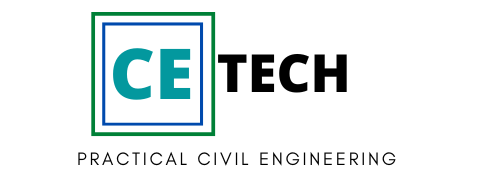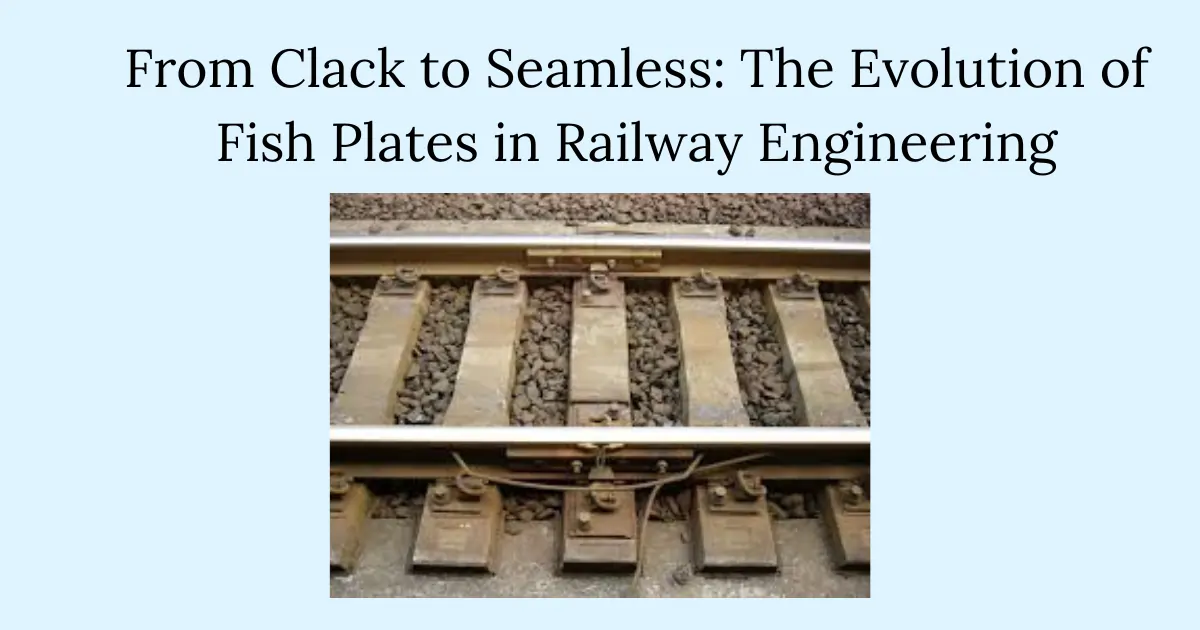The rhythmic clack-clack of train wheels passing over rail joints – a sound that’s becoming increasingly rare in modern railways. This nostalgic symphony is created by fish plates, crucial components of traditional rail infrastructure that are gradually disappearing from our tracks with the advent of long welded rails.
While the term “fish plate” might evoke images of decorative dinnerware used to serve seafood, in the railway world, these essential pieces of engineering serve a far more practical purpose. Also known as joint bars, splice bars, or joint plates, these metal connectors have been fundamental to rail construction for generations.
Although modern rail networks increasingly favor seamless welded tracks, fish plates haven’t completely vanished from the railway landscape. They continue to play a vital role in preserving heritage railways, maintaining their historical authenticity while ensuring safe operation. Even in contemporary rail systems, these versatile components find specialized applications where their unique properties prove invaluable.
Join us as we embark on a fascinating journey through the world of railway fish plates. We’ll discuss their design and functionality, examine the various types available, uncover their material specification, and discover how they continue to contribute to modern rail infrastructure.
What Are Fish Plates?
Fish plates are pieces of rolled rail sections that are used to join two sections of rail track together. It is supposed that they get their name from french word ficher which means to peg or fix or from the fish that is used to strengthen masts of ships. Typically made of steel, fish plates are designed to fit snugly against the sides of the rail, with bolt holes that allow them to be securely fastened to both rail sections.
The primary purpose of fish plates is to:
1. Connect rail sections, creating a continuous track
2. Maintain proper alignment between rail sections
3. Distribute the load of passing trains across the joint
4. Allow for thermal expansion and contraction of the rails
How Do Fish Plates Work?
Fish plates, also known as splice bars, are critical components in railway engineering that connect two pieces of rail at joints, ensuring structural integrity and continuity of the rail track. They serve multiple functions, including load distribution, thermal expansion accommodation, and wear resistance.
Functionality of Fish Plates
Load Distribution: Fish plates help distribute the weight of trains evenly across rail joints, which are potential weak points in the rail network. This prevents localized stress that could lead to failures or derailments.
Thermal Expansion Accommodation: Unlike continuously welded rail (CWR), fish plates allow for some flexibility at the joints. This flexibility is crucial for accommodating thermal expansion and contraction of the rails due to temperature changes, thereby reducing stress on the rail.
Wear Resistance: The design of fish plates is intended to resist wear over time. They can be tightened as they wear down, maintaining a secure connection between rail segments.
Ease of Replacement: Fish plates facilitate easier maintenance and replacement of rails when necessary, as they can be removed and replaced without extensive disruption to the rail infrastructure.
Applications in Different Rail Systems
Normal Joints: In standard railway applications, fish plates are used to connect rails of the same size and profile. They are designed to ensure that the adjoining ends are aligned both horizontally and vertically, maintaining track stability.
Long Welded Rail (LWR): While LWR systems minimize joints to reduce maintenance needs and improve ride quality, fish plates may still be employed at strategic locations where flexibility is required. They help manage stresses in areas with tight curves or switches where rigid connections could lead to track deformation5.
Continuously Welded Rail (CWR): Although CWR systems have largely replaced traditional fish plate joints due to their advantages in reducing maintenance and providing smoother rides, fish plates remain relevant in specific scenarios where track alignment adjustments are necessary or where electrical isolation is required, such as in electrified rail systems.
Types of Fish Plates
There are several types of fish plates, each designed for specific applications or rail configurations. Fish plates are also further classified as light and heavy fish plates depending on the type of rail they are used to join. Light rails are 8-30 kg/m and heavy rails are 38-75 kg/m.
1. Standard Fish Plates: The most common type, used for joining rails of the same size and profile.
2. Compromise Fish Plates: Designed to join rails of different sizes or profiles. These have a tapered design to accommodate the difference in rail heights.
3. Insulated Fish Plates: Used in electrified railway systems to prevent electrical current from flowing between rail sections. These incorporate insulating materials between the fish plate and the rail.
4. Joggled Fish Plates: Feature a slight bend or “joggle” in the middle, allowing them to fit over rail welds or other irregularities. This type of fish plate accommodates fractured welds.
5. Glued fish plates: Used mainly in CWR and heavy rail systems, these type of plates have 6 bolts and use adhesives to maintain robust mechanical strength of joints while maintaining adequate insulation.This type of joint uses an adhesive layer to bond the fish plate to the rail web, which helps retain insulation and withstand rail creep, making it suitable for long welded rails
Materials and Design Considerations
Fish plates are typically made from high-strength steel to withstand heavy loads and environmental conditions. The design often features multiple bolt holes for secure fastening, ensuring that the fish plate remains firmly attached to both rail sections. The shape is often tapered to facilitate a snug fit between the rails, promoting even alignment when installed.
Key Specifications
- Ultimate Tensile Strength (UTS): Fish plates should have a UTS between 57 to 68 kg/mm² to ensure they can handle operational stresses effectively.
- Bolt Specifications: For standard applications, bolts made from medium or high carbon steel are used, with specific dimensions depending on the rail weight class.
Fishplate’s Use in Modern Railways
In today’s railway industry fish plates are diminishing in use because they are considered as weak points in railway tracks. The railway industry is now reducing the number of these joints because it is observed that their use increases the maintenance needs and risk for accidents. Hence their use is now limited in old tracks, joints of long welded sections, switches, and tight curves as for those places necessitates their application.
While continuous welded rail (CWR) has become increasingly common in modern railway systems, fish plates still play a crucial role in many scenarios:
1. Temporary Repairs: Fish plates are used for quick, temporary repairs to damaged sections of track.
2. Maintenance and Replacement: During track maintenance or replacement, fish plates allow for sections of rail to be easily removed and reinstalled.
3. Expansion Joints: In areas where thermal expansion is a significant concern, fish-plated joints allow for necessary movement.
4. Transition Areas: Fish plates, especially compromise types, are used where different rail types or sizes meet.
5. Secondary and Branch Lines: Many secondary and branch lines still use jointed track with fish plates rather than CWR.
6. Heritage Railways: Historical and tourist railways often maintain traditional jointed track with fish plates for authenticity and easier maintenance.
7. Insulated Joints: In electrified systems, insulated fish plates are crucial for creating electrical breaks in the track.
How fish plates are used with different types of welded rails:
1. Short Welded Rails (SWR):
Fish plates are commonly used to join sections of short welded rails. They are 3×12 m long. They provide continuous support and maintain line and level. Ordinary fish plates are typically used for joining SWR sections.
2. Long Welded Rails (LWR): the longest of such rails measure 150m.
For LWR, fish plates are used in specific situations:
– Buffer Rails: Fish plates are used to join buffer rails at the ends of LWR sections.
– Installation and Destressing: One-meter long fish plates are often used during the laying and destressing of LWR.
– Repair: Fish plates are used for repairing rail fractures in LWR.
– Special Locations: They are used on bridges and their approaches, and with CMS (Cast Manganese Steel) crossings.
3. Continuous Welded Rails (CWR): these run in from 500m to kilometers. These rails are imported as 150 m sections and welded to form continuous sections.
In CWR, the use of fish plates is significantly reduced, but they still have some applications:
– Temporary Repairs: Fish plates, especially joggled fish plates, are used for temporary repair of cracked welded joints in CWR.
– Expansion Joints: In areas where thermal expansion is a significant concern, fish-plated joints may be used to allow for necessary movement.
– Transition Areas: Fish plates, especially compromise fish plates, are used where different rail types or sizes meet within a CWR system.
Additional points:
– One-meter long fish plates are generally preferred for use with concrete sleepers in modern track systems.
– For rail joints on Mono Block Concrete (MBC) Sleepers, one-meter long fish plates are typically used.
– In areas with high traffic density, one-meter long fish plates are considered a better substitute for ordinary fish plates.
It’s important to note that while the use of fish plates has decreased with the advent of CWR, they still play crucial roles in specific situations, especially for maintenance, repairs, and in areas where welded joints are not practical or desirable.
Fish plates may not be the most glamorous component of railway infrastructure, but their importance cannot be overstated. These simple yet ingenious devices have been keeping trains on track for over 150 years, and continue to play a vital role in modern railway systems. From standard joints to specialized applications in electrified railways, fish plates demonstrate how even seemingly minor components can have a major impact on the safety, efficiency, and reliability of rail transport.
As railway technology continues to evolve, it’s likely that fish plates will adapt and improve as well, ensuring that they remain an essential part of railway infrastructure for years to come. The next time you hear the rhythmic clickety-clack of a train passing over rail joints, spare a thought for the humble fish plates working tirelessly to keep everything running smoothly
Sources:
[1] https://rail-track.com/4-types-of-fish-plate/
[2] https://www.veeratechnotrec.com/railway-fish-plates-types-and-features/
[3] http://www.railroadfastenings.com/blog/different-types-of-fish-plate-in-railway.html
[4] https://www.iricen.gov.in/ModelRoom/C3_Fish%20Plates.html
[5] https://www.linkedin.com/pulse/rail-101-driving-fishplates-extinction-daniel-pyke
[6]https://www.trackopedia.com/en/encyclopedia/infrastructure/superstructure/fastenings/fish-plates

